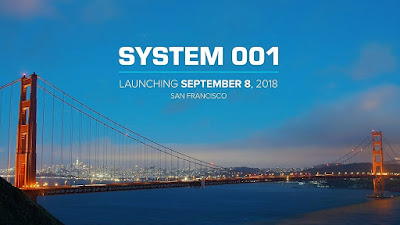System 001 On Difficult Mission
Written
by SurfWriter Girls Sunny Magdaug and Patti Kishel
Like an intrepid Star Wars
droid only bigger, System 001 – a
2,000 ft., U-shaped floating barrier – is on an incredible journey to save the
world's oceans from trash.
Launched from San Francisco Bay
September 8th, System 001 headed out to the Great Pacific Garbage Patch – 1,200
nautical miles away between California and Hawaii – on a Herculean quest to
remove the tons of debris circulating in the massive ocean gyre, which is more
than twice the size of Texas.
“Today’s launch is an important
milestone, but the real celebration will come once the first plastic returns to
shore," said Dutch inventor Boyan Slat, the 24-year-old founder of Ocean
Cleanup, the non-profit that created System 001. "For 60 years,
mankind has been putting plastic into the oceans; from that day onwards, we’re
taking it back out again," he emphasized.
With 1.8 trillion pieces of debris
trapped in the gyre – a giant spiral of swirling ocean currents – System 001
has an enormous task ahead of it. One that many wonder if it can be done.
Marcus Eriksen, co-founder of the
Five Gyres Institute, says that much of the plastic System 001 hopes to remove
has already been shredded into micro-particles and distributed below the waves
where the barrier won't reach it.
Eriksen and other oceanographers are
also concerned that the system might break up and disintegrate in rough water,
putting more debris in the ocean. Or inadvertently catch sea life drifting in
its path.
And, indeed, just recently a
60-ft.-long end section of the device broke off, putting the project on hold
for repairs that could take several months. This is a set-back that comes just
two weeks after some glitches with the system's ability to contain the trash it
captures and keep from flowing back into the ocean.
Undeterred, though, Slat believes
that his system, once modifications have been made, is still up to the
challenge. The young inventor told the media, "There is slight
disappointment, because we hoped to stay out there a bit longer to do more
experiments. But there is no talk whatsoever about discouragement.”
Some high-profile investors – including
PayPal founder Peter Thiel and Salesforce.com CEO Mark Benioff – are
optimistic, too. Along with transport firm A.P. Moller, which donated its ship
the Maersk Launcher, to tow the system out to sea.
System 001, with its $20 million
floating boom and underwater netting ocean cleanup system, is the first of
several dozen systems Slat hopes to launch. Each one is projected to collect
150,000 pounds of plastic each year. Propelled by both wind and waves, the
systems are designed to catch debris as it crosses their paths, capturing it in
U-shaped barriers for storage until it is transported to shore for disposal and
recycling.
Once a full-scale system roll-out
begins, Slat's dream is that by 2023 half of the Garbage Patch will be cleaned.
And, ultimately, by 2050 the oceans themselves.
Can it be done? Only time will tell.
Inventors, scientists, artists and dreamers know what it's like to push the
boundaries of possibility. In his long quest to develop the light bulb, Thomas
A. Edison said of all his failed attempts: “I have not failed. I've just found
10,000 ways that won't work.”
Film icon Audrey Hepburn is another
one who refused to let insurmountable challenges stop her.
Please post your comment below. Comments
will appear the next day.
Sunny Magdaug and Patti
Kishel hold the exclusive rights to this copyrighted material. Publications
wishing to reprint it may contact them at surfwriter.girls@gmail.com
Individuals and non-profit groups are welcome to post it on social media sites
as long as credit is given.












No comments:
Post a Comment